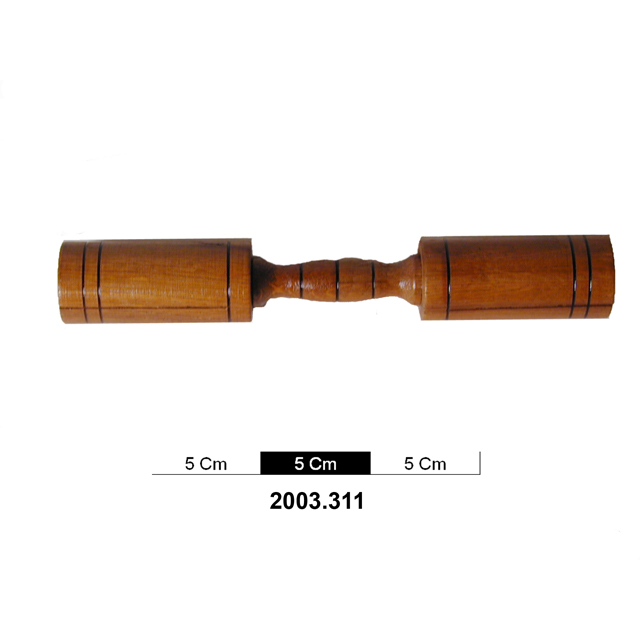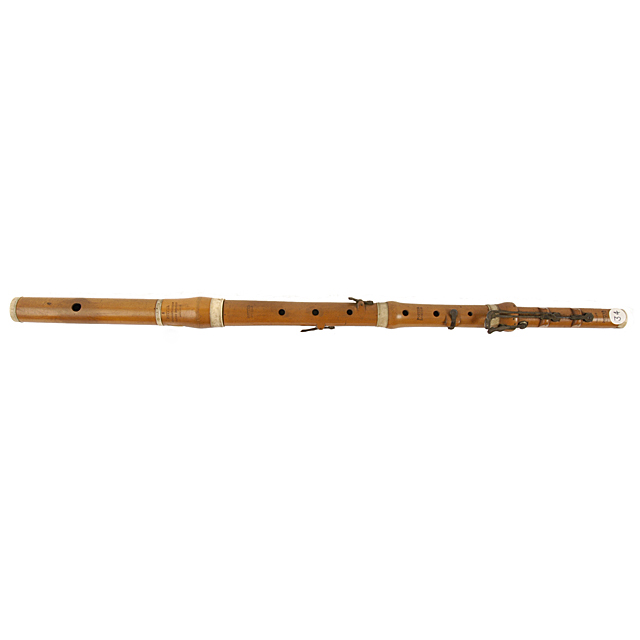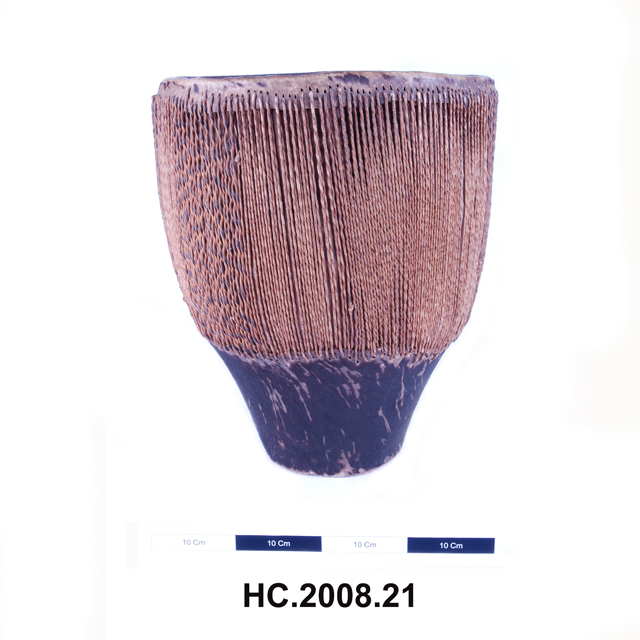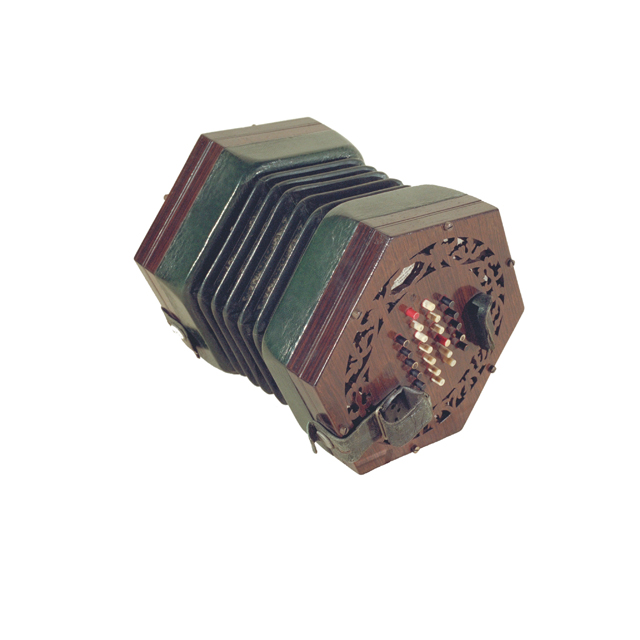
Kapytse (Belarusian), kopyttse (Russian), slit drum, double-ended tubular wood block. Two hollow cylindrical resonators, connected by a central turned handle. Made in three sections, all of varnished wood. The resonators each have the same external dimensions (40 x 90 mm), but the central chamber of each has a different diameter, resulting in different pitches. The lower sounding resonator has a central chamber of 29 mm diameter, while the higher resonator has a central chamber of 25 mm diameter. Both chambers are slightly offset from the axis of the external cylinder. The resonators each have three lateral grooves cut in the external surface and highlighted in black paint, two near the rim and one near the handle. Two slots are cut on opposite sides of each resonator from the rim to the groove nearest the handle. The handle is turned to an ergonomic shape with a bulge at the middle and at each end. Three equidistant lateral grooves are cut into the handle and highlighted in black paint. The stick (2003.311.1) is a piece of light coloured wood, turned to an even cylindrical shape with the end edges chamfered. Made at the PRP "Muzrem" factory in Minsk.
The kapytse is held by the middle section and struck at the outer ends with the stick. The chambers at each end are hollowed out to different diameters to produce two distinct pitches. The instrument is associated with the folk music of Belarus. Inna Nazina, writing in 1997, reported its use in the Vetka region near the city of Gomel, where it was used in an ensemble with a violin and a garmonik, the distinctive piano accordion of Belarus. (Nazina, I.D. 'Belaruskiia narodnyia muzychnyia instrumenty' Minsk 1997 p.32)






